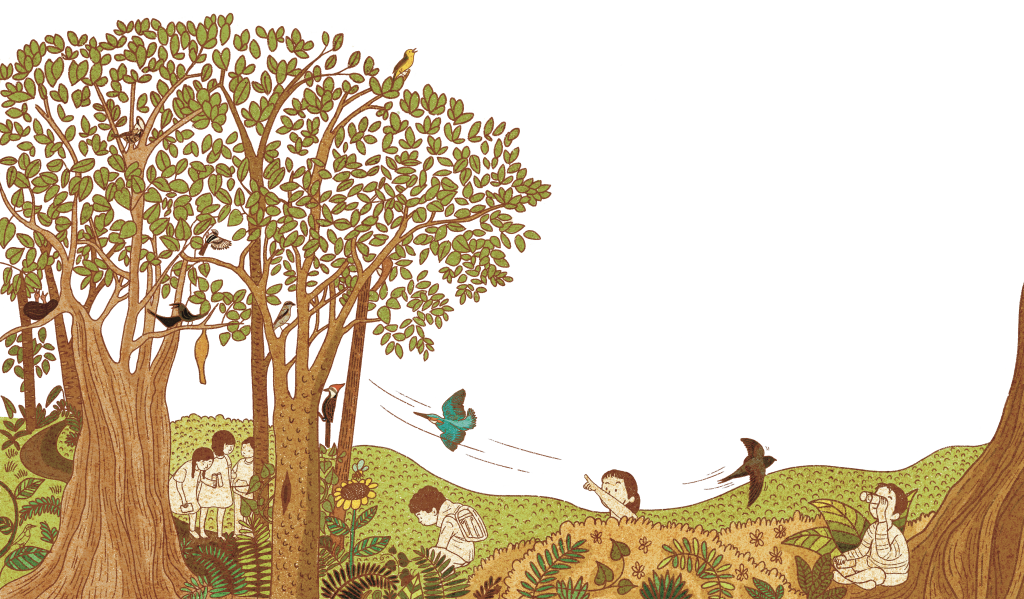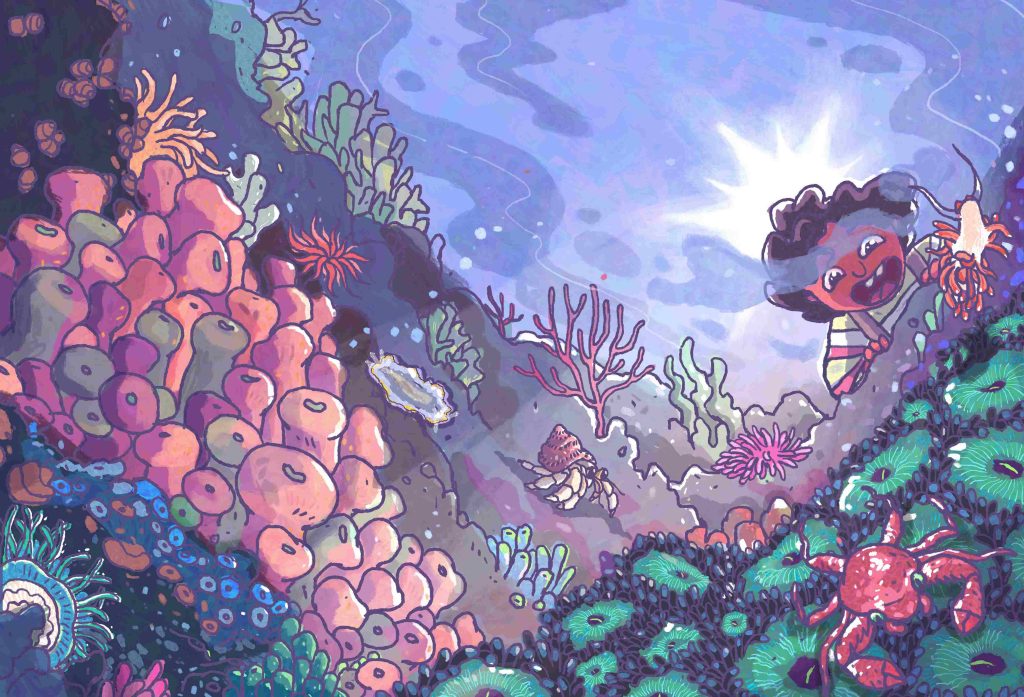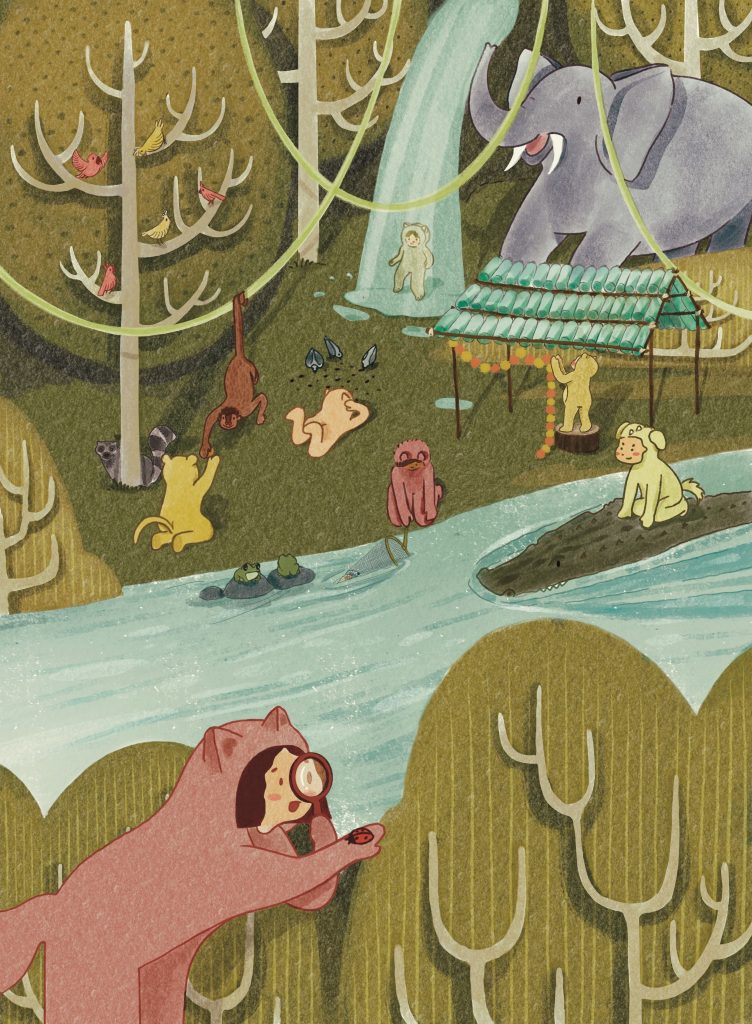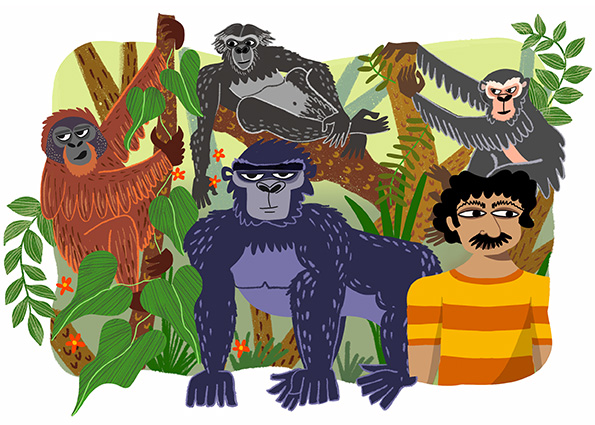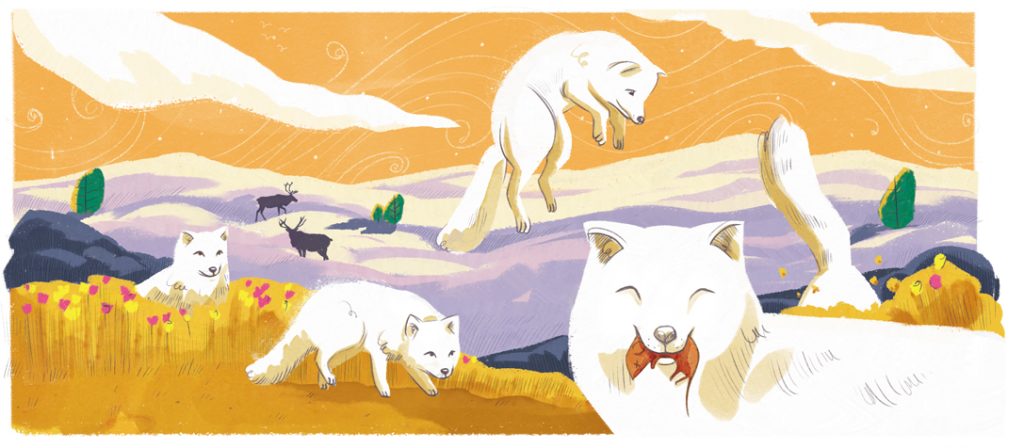My name is David and I study trees. In particular, I hope to find out how the trees in the Amazon rainforest are coping with our changing climate and global warming.
My research takes place in a remote part of the Amazon in Eastern Brazil. To get there takes me three whole days of travelling. First I take three different flights, to get from London to Belém, a city at the mouth of the Amazon River, where it flows into the ocean. Once in Belém, I stock up on enough food to last me for the month I will spend in the jungle. I have to buy everything I will need, as I won’t see another shop for weeks. Belém is a busy city, acting as the main port for the entire Amazon. Here, I visit a huge market, vibrant and colourful, with lots of new sights and smells for me to take in, including tropical fruits of every size and colour, many I have never heard of before. The fish market is the most impressive though, as it sells enormous fish caught from the river. Some weigh over 80kg and are longer than I am tall.

The fish market in Belém where giant Amazonian river fish are for sale.
After visiting the market, I join the rest of my research team. We board a boat and begin the next leg of the journey. For the next 30 hours, we travel up the Amazon River to our field station, sharing a small cabin to sleep in, telling stories to pass the time. During these two days, we travel 250 miles, passing only small villages on the way. As we enter deeper into the lush green forest, we see brightly coloured parrots flying overhead and watch pink river dolphins swimming alongside the boat.

The sunrise over the Amazon River is spectacular during the long boat journey to our field base.
When we arrive, we unload the boat and set up our equipment, making sure everything is working and nothing has broken on the way. We then take our first trek into the forest to look at the trees we will be studying.
Over the next month, I undertake this walk every day. The heat and humidity are intense, but fortunately, the canopy blocks out most of the sun. As I walk I keep my eyes open for wildlife, as I never know what I will encounter in the jungle. Some days it’s birds I see; other days it’s snakes.
In the forest, my work involves measuring the health of leaves. To do this I use a piece of equipment that can tell me how fast the leaves can make food and how fast they use it. I then use this information to understand if the forest is still healthy and to identify which trees are not doing so well. If the leaves have a high capacity to produce sugar but consume very little, I know they are healthy.
Despite being in the middle of a forest, getting the leaves I need is actually a major challenge. Trees here can be very tall and some only produce leaves 40-50 metres above the forest floor. To reach these I work with some local people, who compared with me can climb as well as the monkeys in the forest around us. Climbing up the tree trunk, they cut a branch down for me, carefully selecting a branch exposed to the sun. We try to have as little impact on the environment by only collecting one branch with roughly 40 leaves, leaving thousands more intact.

Every day I measure the health of several different trees. This is me working in the forest.
Days working in the forest are long and hard. I work through the midday sun, all the while fending off biting insects. Every day I eat the same food and do repetitive tasks. Despite these challenges, the forest is an exhilarating place to work. I love seeing new plants and animals every day and never get tired of the stunning scenery. The noises in the forest are magical, changing every hour as different animals become active. In the morning I hear birds singing, whilst the noisy cicadas wake up at lunchtime, producing an amazing racket with their wings. In the evening, I hear the terrifying howls of the howler monkeys as they warn the other groups – “this is our territory”. I love how dynamic the forest is and it is a real privilege to work in the biggest rainforest in the world.
One of the main motivations for my work is to improve the conservation of giant trees. This tree reaches 40m in height, emerging above the canopy.
Before we realise it, one month in the forest has passed and it is time to leave. We are all sad to say goodbye to the forest and its animals, but we are excited to get home to our families and friends. We return with the data we came for, as well as many memories and new friendships. Just one last thing remains – a three-day journey home.

